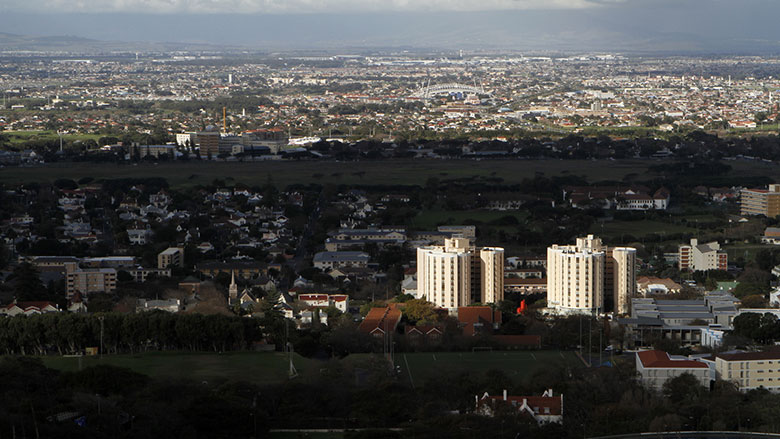
South Africa has come a long way since the advent of democracy in 1994. The democratic government embarked on impressive efforts to make the economy inclusive, considerably expanding social spending and extending public services to those who had been underserved under apartheid. The government managed to balance its new spending priorities with fiscal prudence—a remarkable achievement rewarded by two of the world’s major credit rating agency, Standard and Poor’s (S&P) and Fitch, with the high prized BBB- rating in 2000, judging South African debt to be of investment grade. By 2005, South Africa’s rating had improved to BBB+. A decade on, the trend had reversed and South Africa was back at its BBB- rating by S&P and Fitch, to which S&P added a negative outlook in December 2015.
Some South Africans feared their country might lose their hard-won investment grade credit rating during the last rating review in June 2016. The economy had deteriorated markedly, partly as a consequence of weak global growth—a hangover of the global financial crisis as well as the more recent plummeting of commodity prices battering the South African economy, where commodities account for about 60% of exports. Partly, domestic factors were also to blame, as investor confidence fell to historical lows. Growth estimates for 2016 were revised downwards several times: the latest World Bank estimate for South African growth in 2016 is 0.6%, meaning a negative per capita growth rate. In this environment, headwinds for the government in its effort to stabilize the debt-to-GDP ratio were significant—and this could well have affected South Africa’s credit rating, which reflects the country’s solvency position after all.
It did not come to that. In June 2016, S&P and Fitch affirmed their foreign currency long term credit rating at BBB-, one notch above ‘junk’ (or speculative) status—although S&P also maintained its negative outlook, meaning that a downgrade can still occur by the end of this year, in December. Moody’s affirmed its rating two notches above ‘junk’. And on the domestic-currency side (where 85% of South African debt is rand-denominated), the buffer to the feared ‘junk’ threshold remained comfortable. One of the main reasons for the optimism of the rating agencies was that the 2016 budget had made an ambitious effort toward fiscal consolidation. While fiscal policy has done part of the heavy-lifting, growth prospects hold the key to South Africa improving its solvency position while strengthening the environment for further social process. It is growth that will ultimately banish the ghost of a rating downgrade that has been haunting South Africa.
What would have happened if things had turned out differently in June and South Africa would have lost its investment-grade credit rating? To this end, a team of economists from the World Bank and South African Reserve Bank looked at the history of past downgrades in 20 countries and estimated the impact on short-term borrowing costs. It is a rather broad-brush attempt at understanding the effect of a downgrade on borrowing costs. It employs annual data, only looks at short-term Treasury Bills (where risk premia are more pronounced among longer-term debt instruments), and there are still relatively few cases to study (most of them derive from the post-financial crisis period). Given these important caveats, the findings suggest that a downgrade to sub-investment (or sub-IG) grade by one major rating agency increased Treasury bill yields by 138 basis points on average. When a second rater follow suit with such a downgrade, Treasury bill rates increased by another 56 basis points (although this effect is not statistically significant).
Applying this to the case of South Africa suggests that a rating downgrade was largely priced in by June 2016. If one agency had downgraded South Africa to sub-IG in June 2016, average 2016 T-bill rates should have been at 7.4% in line with market expectations. This would have required an increase in T-bill rates of about 80 basis points compared to the average of the first half of 2016, or by 60 basis points compared to June 2016 levels. If a second rater had followed, the increase would have been starker. According to the 2016 budget, South Africa intends to borrow ZAR 25 billion in T-bills in 2016/17. One rating downgrade to sub-IG would accordingly have resulted in ZAR 100 million in additional costs for 2016 alone. This is likely to only have been the tip of the iceberg though, as 84% of South African 2016 financing is contracted at longer maturities where risk premia tend to be higher. Following S&P’s and Fitch’s affirmation of South Africa’s credit rating T-bill rates have barely changed (although the rand instantly appreciated by 3.3% following the announcement by S&P). This suggests that markets continue to expect a downgrade to sub-IG. The ghost of a downgrade appears to continue haunting South Africa.


Join the Conversation